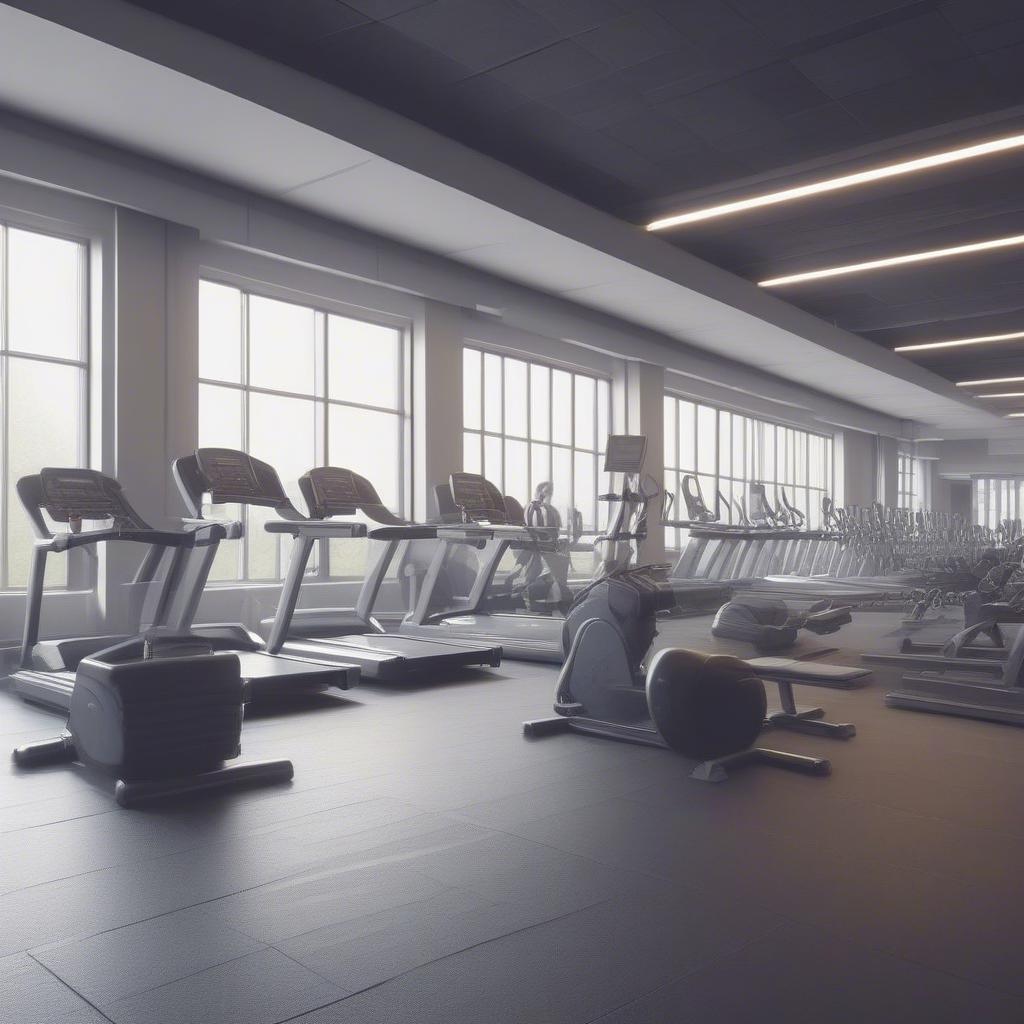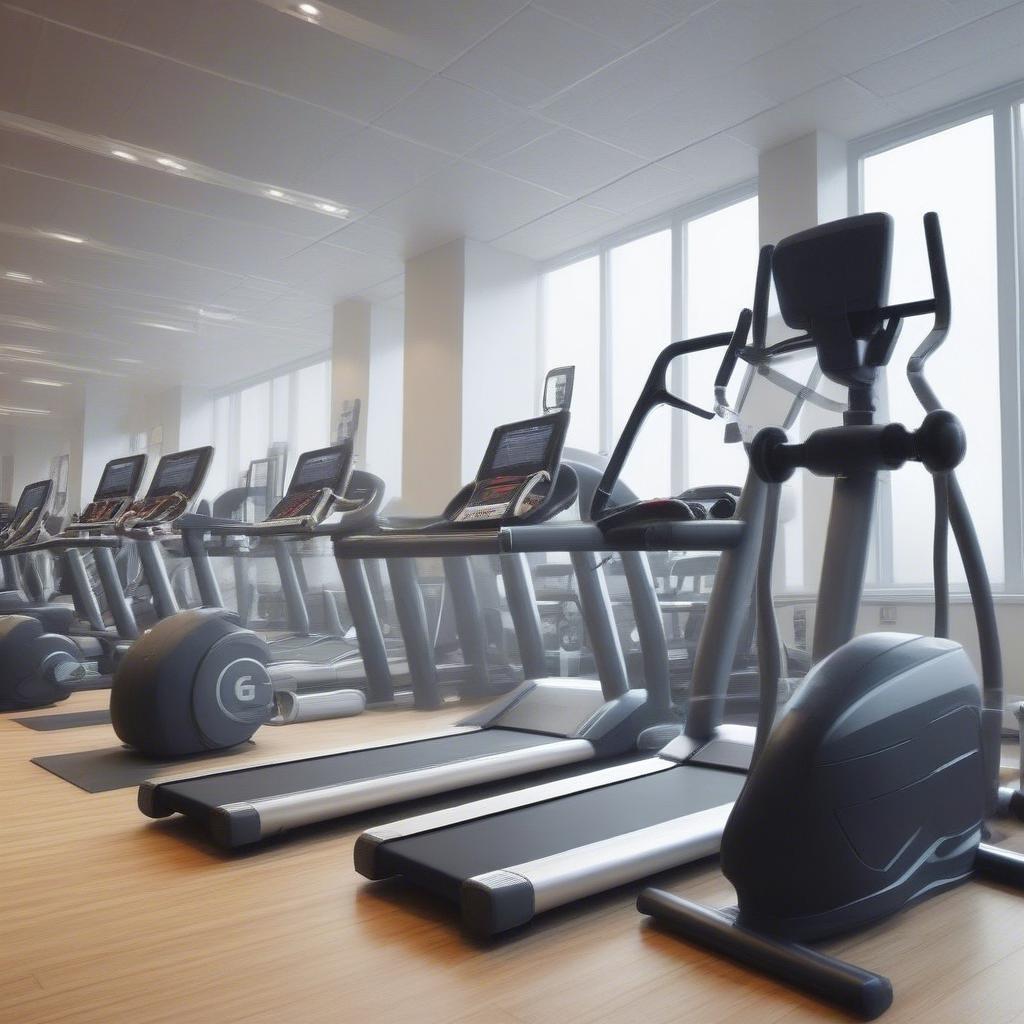
Running a successful gym isn’t just about having top-of-the-line equipment and a killer workout playlist. It’s about creating a safe, comfortable, and organized environment for your members. That’s where well-defined gym policies and fitness center procedures come in. Think of them as the unsung heroes of your operation, working silently in the background to keep everything running smoothly. These operational guidelines are the backbone of your gym, ensuring consistency, fairness, and a positive experience for everyone.
Why Are Gym Policies and Procedures So Important?
Before diving into the "how," let’s understand the "why." Why spend time crafting detailed gym policies? Why bother with elaborate fitness center procedures? It’s because they impact almost every aspect of your business.
Creating a Safe and Respectful Environment
- Safety First: Clear operational guidelines on equipment usage, cleanliness, and emergency protocols are crucial for preventing accidents and injuries. Think of it as your gym’s safety net.
- Respectful Interactions: Policies that address member conduct, personal space, and appropriate attire help foster a respectful and inclusive atmosphere. Nobody wants to feel uncomfortable or unwelcome at the gym.
- Minimizing Conflict: Having clearly defined rules reduces ambiguity and prevents disputes between members and staff. When everyone knows the boundaries, there’s less room for misunderstandings.
Ensuring Consistency and Fairness
- Equal Treatment: Well-defined gym policies ensure all members are treated equally. No favoritism, just consistent application of the rules.
- Predictable Experience: When fitness center procedures are in place, members know what to expect every time they visit. This consistency builds trust and reliability.
- Streamlined Operations: Standardized procedures make it easier for staff to perform their duties efficiently and effectively. This frees them up to focus on what matters most: your members.
Protecting Your Business
- Legal Compliance: Policies related to waivers, liability, and data privacy are essential for protecting your business from potential legal issues. It’s better to be safe than sorry.
- Minimizing Losses: Procedures for handling lost items, cancellations, and late payments help to minimize financial losses and keep your business healthy.
- Professional Image: Clear, well-documented policies and procedures project an image of professionalism and competence. This builds confidence in your brand.
In short, well-crafted gym policies and fitness center procedures are not just about rules; they’re about creating a thriving community built on safety, respect, consistency, and fairness.
Key Areas to Cover in Your Gym Policies and Procedures
Now that we understand the importance, let’s explore the key areas you should focus on when developing your operational guidelines.
Membership Policies
- Joining Process: Outline the steps to become a member, including required forms, payment methods, and any joining fees.
- Example: "To become a member, please complete the online registration form, sign the waiver, and pay the initial membership fee via our website or at the front desk."
- Membership Types and Tiers: Clearly define the different membership options available, including their benefits, limitations, and pricing.
- Example: "We offer a standard monthly membership with access to all gym facilities, a premium membership that includes personal training sessions, and a student membership with discounted rates."
- Payment and Billing: Specify how payments are processed, including payment schedules, late payment penalties, and accepted payment methods.
- Example: "Membership fees are billed automatically on the 1st of each month. Late payments will incur a $10 fee. We accept debit cards, credit cards, and bank transfers."
- Cancellation and Refunds: Detail the process for canceling a membership and any applicable refund policies. Be clear and transparent.
- Example: "Memberships can be canceled with 30 days’ written notice. Refunds are provided only in exceptional circumstances, as determined by management."
- Freezes and Holds: Explain how members can temporarily freeze their membership if they need to take a break.
- Example: "Members can freeze their membership for a maximum of three months per year due to injury or travel, with a two-week prior notice required."
- Guest Policies: Outline the rules for bringing guests, including any guest fees and limitations.
- Example: "Members can bring one guest per visit for a fee of $15. Guests must sign a waiver and comply with all gym rules."
Facility Usage Policies
- Equipment Use: Provide clear instructions on the proper usage of all gym equipment, including safety guidelines and weight limits.
- Example: "Please ensure you know how to operate each machine properly. If in doubt, ask a staff member for assistance. Do not exceed weight limits displayed on the equipment."
- Facility Access: Specify the areas members are allowed to use and any restrictions on certain areas.
- Example: "Members have access to the main workout area, cardio zone, and locker rooms. The sauna and steam room are reserved for premium members."
- Gym Etiquette: Detail acceptable behaviors, including noise levels, phone usage, and respect for other members’ personal space.
- Example: "Please be mindful of noise levels, refrain from using your phone on speaker mode, and avoid excessive lingering on equipment."
- Cleanliness and Hygiene: Emphasize the importance of wiping down equipment after use, using towels, and proper hygiene practices.
- Example: "Please wipe down equipment after each use with the provided disinfectant wipes. Use a towel to prevent sweat from dripping on the machines."
- Locker Room Policies: Clearly state the rules regarding locker usage, valuables, and general conduct in locker rooms.
- Example: "Lockers are for day use only. Do not leave valuables unattended. Please maintain a clean and respectful environment in the locker room."
- Emergency Procedures: Outline the steps to follow in case of emergencies, including fire alarms, injuries, and medical emergencies.
- Example: "In case of an emergency, please follow the evacuation plan posted throughout the facility. Contact a staff member immediately if you experience any injuries."
Class Policies
- Class Booking and Cancellation: Detail the process for booking classes, cancellation policies, and waiting list procedures.
- Example: "Classes can be booked online or at the front desk. Please cancel your reservation at least 24 hours in advance to avoid a cancellation fee."
- Class Attendance: Outline the rules regarding punctuality, attire, and participation in classes.
- Example: "Please arrive on time for classes. Appropriate athletic attire is required. Follow the instructor’s guidance and be mindful of other participants."
- Instructor Conduct: Outline expectations for instructors, including their responsibilities for safety, instruction quality, and member engagement.
- Example: "Instructors are responsible for providing safe and effective instruction. Please notify management if you have any concerns about the instructor’s performance."
Personal Training Policies
- Trainer Qualifications: Specify the required certifications and qualifications for trainers working in the gym.
- Example: "All personal trainers must be certified by a nationally recognized organization and have at least two years of experience."
- Session Booking and Cancellation: Outline the process for booking personal training sessions, cancellation policies, and payment methods.
- Example: "Personal training sessions can be booked directly with the trainer. A 24-hour cancellation notice is required to avoid a cancellation fee."
- Client-Trainer Relationship: Outline the expectations for both clients and trainers, including professionalism, communication, and confidentiality.
- Example: "Trainers are expected to maintain a professional relationship with their clients. They must respect client confidentiality and provide a positive and supportive training experience."
General Conduct Policies
- Appropriate Attire: Specify the required attire for working out, including clothing and footwear.
- Example: "Appropriate athletic attire is required. Shoes must be worn at all times. No bare chests or offensive clothing."
- Food and Beverages: Outline rules regarding food and beverages allowed in the gym and workout areas.
- Example: "Water bottles are permitted. No food is allowed in the workout area. Please dispose of all trash properly."
- Drug and Alcohol Policy: Clearly state that the use of drugs and alcohol is strictly prohibited on the premises.
- Example: "The use of drugs and alcohol is strictly prohibited. Anyone found in violation will be asked to leave the premises and may have their membership revoked."
- Harassment Policy: Outline the gym’s zero-tolerance policy on harassment, including verbal, physical, and sexual harassment.
- Example: "Harassment of any kind is strictly prohibited. Anyone found in violation will have their membership revoked."
Developing Your Gym Policies and Procedures: A Step-by-Step Guide
Now that we’ve identified the key areas to cover, let’s dive into the process of creating effective gym policies and fitness center procedures.
Step 1: Research and Brainstorm
- Review Industry Standards: Research best practices from successful gyms and fitness centers. Look at their websites and policies.
- Identify Potential Issues: Brainstorm potential issues that could arise in your gym, including safety concerns, member conflicts, and operational challenges.
- Consult Your Team: Gather input from your staff and trainers. They have valuable insights into daily operations and member needs.
Step 2: Draft Your Policies and Procedures
- Start Simple: Begin with a basic outline of your policies and procedures. You can add details later.
- Use Clear Language: Use simple, easy-to-understand language. Avoid jargon and legal terms that members might not understand.
- Be Specific: Avoid vague terms. Be clear and specific about what is allowed and not allowed.
- Address All Key Areas: Ensure your policies cover all the key areas mentioned above, from membership to general conduct.
- Prioritize Safety: Put safety as your top priority. Make sure your policies and procedures reflect this commitment.
Step 3: Organize and Document
- Create a Policy Manual: Document your policies and procedures in a comprehensive manual, either in digital or physical format.
- Use Headings and Subheadings: Use clear headings and subheadings to make it easy to navigate the manual.
- Use Numbering and Bullet Points: Use numbering and bullet points to organize information and make it easy to read.
- Include Contact Information: Include contact information for gym management and emergency services.
- Make it Accessible: Ensure the policy manual is readily accessible to staff and members, perhaps on your website or at the front desk.
Step 4: Review and Revise
- Get Feedback: Share the policy manual with your staff and get their feedback.
- Seek Legal Counsel: Consult a lawyer to ensure your policies comply with all relevant laws and regulations.
- Regularly Update: Review and update your policies and procedures regularly to reflect changes in the fitness industry and address any new issues that may arise.
- Communicate Changes: Communicate any policy changes clearly to your members.
Implementing and Enforcing Gym Policies and Procedures
Developing policies is one thing, implementing and enforcing them is another. Here’s how to ensure your operational guidelines are effective.
- Staff Training: Train your staff thoroughly on all policies and procedures. They need to understand them inside and out.
- Member Communication: Communicate your policies clearly to your members through your website, signage, and welcome packets.
- Consistent Enforcement: Enforce your policies consistently. Favoritism can undermine the credibility of your rules.
- Be Proactive: Address potential problems before they escalate. Don’t wait for a situation to get out of hand before taking action.
- Be Fair and Understanding: Enforce your policies fairly, but also with understanding and compassion. Sometimes a gentle reminder is all that’s needed.
Leveraging Technology for Gym Policies and Procedures
Technology can be a valuable tool for managing your gym policies and fitness center procedures.
- Digital Signage: Use digital signage to display important policies and announcements.
- Membership Management Software: Use membership management software to track attendance, payments, and waiver signatures.
- Online Booking Systems: Use online booking systems for classes and personal training sessions.
- Automated Notifications: Set up automated notifications to remind members of upcoming classes and appointments, as well as policy changes.
- Online Policy Manual: Host your policy manual online for easy access.
How Learn Business Supports Businesses Like Yours
Here at Learn Business, we understand the challenges of running a successful gym. That’s why we offer guidance and templates tailored to your specific needs. We can help you develop:
- Customized Gym Policy Templates: Save time and effort with our pre-designed templates, easily customizable to fit your specific needs.
- Operational Procedure Checklists: Ensure consistency and efficiency with detailed checklists for daily operations.
- Best Practice Resources: Access our library of articles, guides, and videos covering the latest industry trends and best practices.
- Personalized Business Coaching: Get one-on-one guidance from experienced business coaches to help you achieve your goals.
We are committed to helping you create a thriving business by streamlining operations, improving member experience, and ensuring your gym operates professionally and efficiently. Learn Business provides you with the tools and resources you need to succeed. From membership sign-up to equipment maintenance to training protocols, we’ve got you covered.
Conclusion
Developing effective gym policies and fitness center procedures is not just about writing rules; it’s about creating a safe, respectful, and thriving community. By taking the time to create clear, consistent, and comprehensive operational guidelines, you will set your gym up for long-term success. Remember to prioritize safety, be fair and consistent, and always strive to create the best possible experience for your members. With the right policies and procedures in place, your gym can become a place where everyone feels welcome, respected, and motivated to achieve their fitness goals.



Leave a Reply